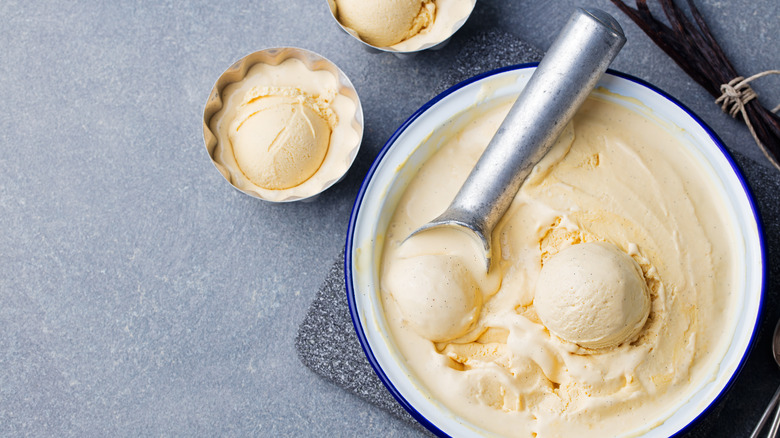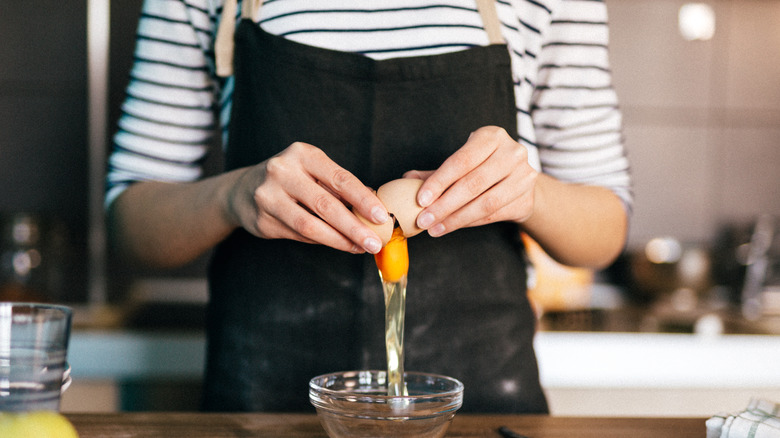Eggs Prevent Your Homemade Ice Cream From Getting Freezer Burn
Ice cream is more complex than you might think, and making it at home can be finicky. It can be discouraging to pull your latest creation out of the freezer, expecting the texture and flavor of your favorite scoop shop — only to find it's become icy, rock hard, or freezer burned. A simple addition can solve this problem: eggs.
The myriad proteins and complex fats in egg whites and yolks help your ice cream end up with a more rich and creamy texture and less crystallization — and last longer in the freezer without going bad, too. In the protein department, albumen (the main protein in egg whites) and others coagulate when heated, so they trap water molecules in a sort of mesh-like structure. This helps prevent moisture from crystallizing and becoming chunky.
But by far the most important component in eggs, as far as your homemade ice cream is concerned, is lecithin. It's an emulsifier, meaning it binds together fats and water, so it amps up the creamy texture of ice cream and helps it stay frozen longer. Lecithin is also the reason egg-yolk mayonnaises like Blue Plate taste better. Because eggs keep moisture trapped without crystallizing, well-emulsified ice cream is less prone to drying out and experiencing freezer burn, too.
How to successfully incorporate eggs into your ice cream
Because the fat bonds and protein structures in eggs are so complex, they can be easily destroyed by heat. And sugar essentially raises the temperature at which this breakdown begins — so temperature swings can be even more devastating in delicate ice cream bases. To incorporate eggs properly, you have to temper them, or slowly raise their temperature, so they don't curdle.
When it comes to homemade ice cream, there are a couple ways to accomplish this. One method is to beat eggs and sugar together first, then slowly add hot milk and cream while still stirring constantly. Another involves combining cream, milk, and sugar over medium heat, then removing it from the heat and whisking a small quantity of the hot mixture into beaten eggs. The gently warmed eggs can then be added to the remainder of the dairy base. To make this process easier, many commercial producers have a trick up their sleeve: They use xanthan gum in their ice cream, which acts as a stabilizer.
And when it comes to eggs, one more common homemade ice cream mistake to avoid: Choose fresh eggs, since their effectiveness in ice cream decreases over time. As eggs sit, the lecithin content declines relative to their cholesterol, which impairs eggs' ability to emulsify oils with water. So when it comes to ice cream, eggs are a necessity — and fresh ones are even better.

